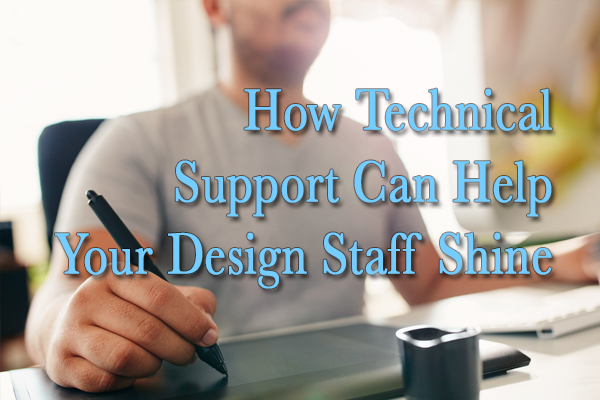

Does your organization like to bend layout design conventions to spice up your publication with new creative visual elements? Chances are good that the answer is yes.
And when you’re bending design conventions, chances are good that your design staff has become stuck on a production technicality that you didn’t have an easy answer for.
“That’s when our computer support staff can be a great resource,” says Karen Pribbernow, prepress support specialist at Walsworth’s Michigan printing, binding and fulfillment facility.
Pribbernow says it’s common for customers to have questions about creating a specific design effect so it will translate to print as expected. Sometimes customers want to verify that they built a page or file efficiently, and sometimes they simply want feedback about two design options being considered in-house.
Walsworth’s technical support team analyzes files upon submission to detect technical issues such as missing fonts, graphics or incorrect file formats. And they’re available to provide personalized training to ensure a smooth workflow and eliminate potential project delays.
1. Use Walsworth export settings to create PDFs for submission.
Walsworth has created Adobe® InDesign® export settings and QuarkXPress® export settings to help you create and submit PDF files that are optimized for print.
The settings help ensure that trim marks are properly positioned, fonts are properly embedded and images are exported at a resolution level appropriate for offset printing.
2. Convert all spot colors to CMYK within InDesign before exporting to PDF.
 Unless you have arranged for a specific Pantone® spot color to be utilized in your publication, all spot colors used in your layout should be converted to CMYK for standard four-color printing.
Unless you have arranged for a specific Pantone® spot color to be utilized in your publication, all spot colors used in your layout should be converted to CMYK for standard four-color printing.
Note that placed advertisements sometimes contain spot colors that your design staff may not be aware of.
The CMYK conversion can be done as follows when exporting PDFs from InDesign:
- Go to File > Export.
- Name the file, select folder location, and click Save.
- Highlight Output on the sidebar within the Export dialog box.
- Click the Ink Manager button.
- Check the All Spots to Process selection box and click OK.
- Click the Export button.
3. Include proper bleed allowance. (at least 1/8”)
The term bleed allowance refers to an extension of graphic elements beyond a page’s trim marks to provide adequate flexibility for the trimming process during print production. Without proper bleed allowance, it’s possible that a publication’s pages would have white edges when that isn’t the intended design result.
Extending graphic elements 1/8” or more beyond the page’s trim marks provides sufficient bleed allowance to avoid white page edges during production.
4. Use safe margins for text. (at least 1/4”)
When text is too close to the gutter of a spread, it can get visually lost due to a publication’s binding. This is especially true for perfect-bound publications that don’t lay as flat as publications with saddle-stitch or lay-flat binding.
To help ensure text isn’t visually lost in the gutter, keep text at least 1/4” from the center of a spread. For thicker publications, a 3/8” inner margin is recommended for text elements.
5. Ensure placed advertisements don’t have exposed trim marks.
Does your publication incorporate placed ads from corporate sponsors or advertisers? If so, you may need to provide them with some guidance regarding trim marks for the ads they submit to you.
A trim mark issue can be caused by InDesign’s default 6pt “crop mark offset” setting. Inform your advertisers that this setting needs to be changed to 9pt so that your ad pages don’t have trim marks unintentionally exposed to readers. Another option is to direct advertisers to eliminate trim marks in the ads they submit to you.
Note that QuarkXPress calls these registration marks, but the issue and solution is the same.
6. Ensure your cover’s spine is properly sized for perfect-bound publications.
Whenever a publication utilizes perfect-binding, the spine size will vary based on the total number of pages and the thickness of the selected paper. Because of this, the size of a publication’s spine in your cover layout is critical.
Walsworth’s technical support team is happy to help ensure that your layout dimensions are correct before you submit your cover.
7. Call for assistance any time you have questions.
We’re here to help whether you have a question about page layout, monitor color calibration or creating a special visual effect. Our goal is to ensure that your publication looks exactly like you intended so that both you and your readers enjoy your design and content.
Walsworth’s technical support staff is dedicated to helping customers solve problems and avoid frustration. As Pribbernow says, “The highlight of my day is when a customer says I made their job easier.”
